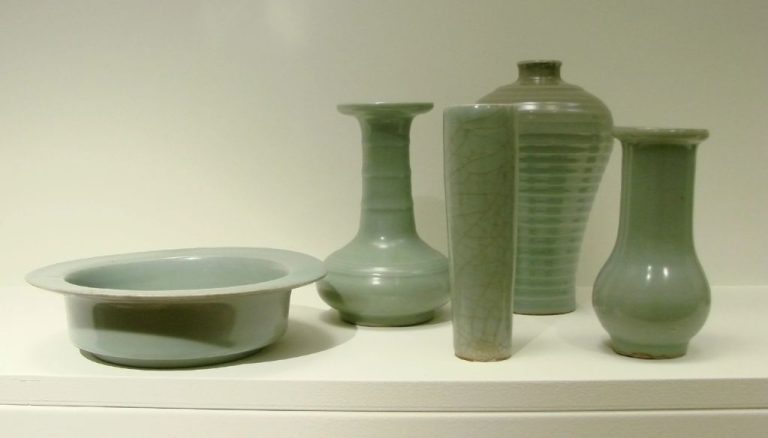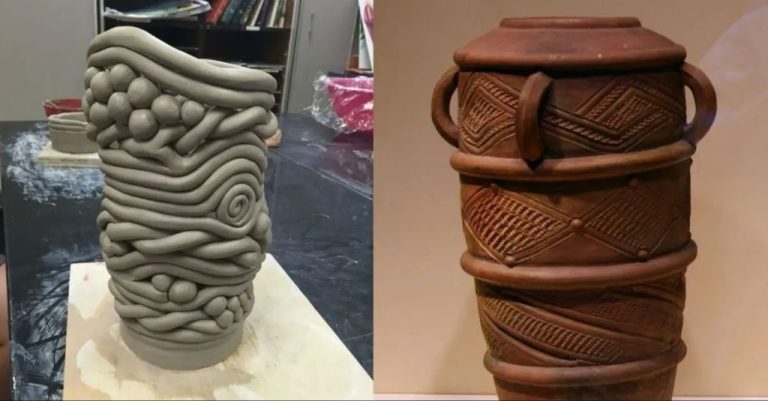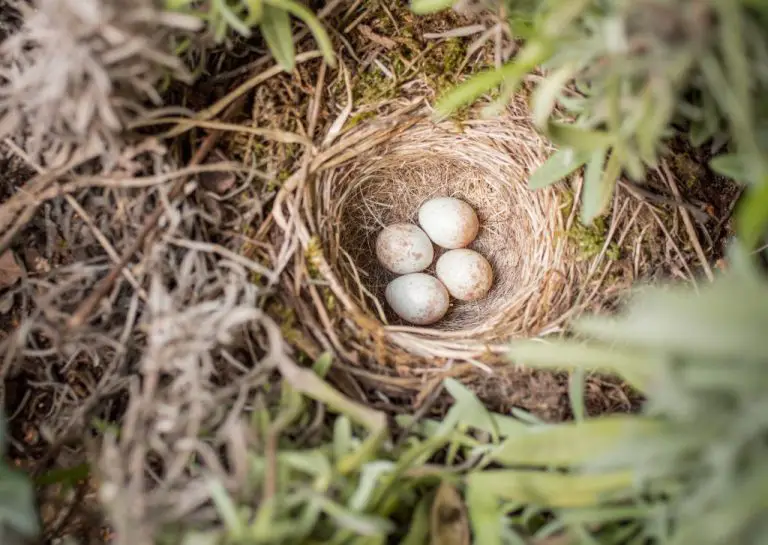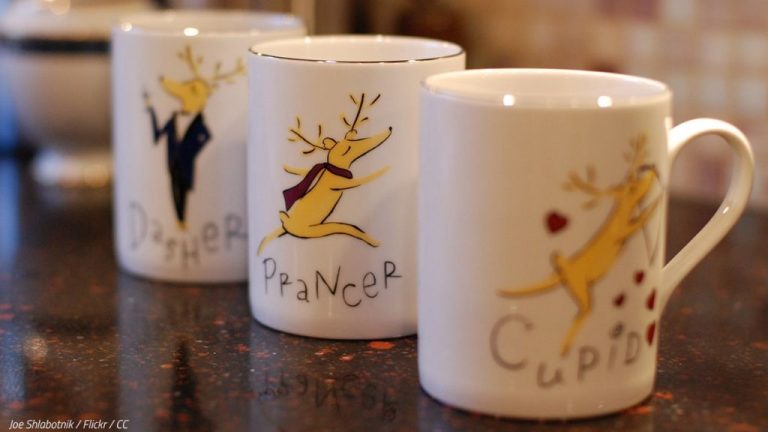What Are The Stages Of Glass Fusing?
Glass fusing is the process of joining pieces of glass together by heating them in a kiln until they melt and fuse into one solid piece. It is a technique that has been practiced for thousands of years. Some sources cite evidence that ancient Egyptian artisans were familiar with the process as early as 2000 BC (Source). Other sources note that it may have originated with the Romans or earlier Mesopotamian civilizations (Source).
In contemporary glass fusing, the glass pieces are arranged in a design on a kiln shelf or mold before firing. The temperature is raised high enough to cause the glass to soften and fuse together, but not high enough to allow the glass to slump or lose its shape entirely. This initial firing stage bonds the glass pieces, creating a single unified piece. Additional firings may be done at various temperatures to further shape or anneal the glass. The process allows for creating colorful patterns, textures, and three-dimensional forms out of glass.
Compared to other glass techniques like stained glass, fusing allows the artist more flexibility and control over the design. It opens up creative possibilities beyond just cutting and fitting pieces of glass. With proper understanding of the process, glass compatibility, firing steps, and more, fusers can produce everything from jewelry and dishes to decorative objects and wall art.
Selecting Glass
When selecting glass for fusing, it’s important to choose glass that is compatible based on COE, or coefficient of expansion. As explained on The Fusing Shop, glass that is properly matched for COE will expand and contract at the same rate during the firing process. The two main types of compatible COE glass are COE 90 and COE 96.
There are several options when it comes to the form of glass used for fusing, including sheet glass, glass frit, stringers, and confetti. Sheet glass comes in a variety of colors and textures and can be cut into any shape. Frit refers to small granules of crushed glass, while stringers are thin strands of colored glass. Confetti provides small pieces of glass in various shapes and colors. As noted by Rainbow Art Glass, the different forms of glass allow for creativity and experimentation in the glass fusing design.
Cutting and Arranging Glass
Once the glass is selected, the next step is to cut and arrange the pieces. This involves using specialized tools like glass cutters, nibblers, and grozing pliers to precisely cut the glass to the desired shapes and sizes.
Glass cutters are essential tools that make clean cuts through glass. They have small cutting wheels made of tungsten carbide or steel. The right amount of pressure must be applied to score and cut through the glass without shattering it. Nibblers can then be used to gently break off smaller pieces from the scored line.
Grozing pliers help shape the glass by breaking off sharp corners or edges. The pliers have specially shaped jaws that apply pressure at just the right angle. With practice, intricate shapes can be crafted using the grozing pliers.
The glass pieces are arranged on a kiln shelf according to the planned design. It’s important to leave small spaces between the pieces to account for glass expansion during firing. The design may also utilize stringers, frit powder, or dichroic glass to create certain visual effects.
Proper cutting and arrangement sets the stage for how the fused glass project will turn out after firing. It requires dexterity, planning, and an artistic eye for composition. With the right approach, beautiful patterns and imagery can be achieved by arranging cut glass pieces.
Cleaning and Preparing Glass
Proper cleaning and preparation of glass is an essential first step before beginning any glass fusing project. It helps ensure the glass fuses smoothly and cleanly in the kiln. All glass should be washed to remove any oils, dust, lint, or other contaminants from the manufacturing process. Water and a mild detergent work well for cleaning. Avoid using paper towels, as they can leave behind fibers and lint. A lint-free cloth, sponge, or brush should be used instead.
The work surface must also be kept clean and free of debris. Any bits of glass, dust, or dirt on the work surface can get trapped between pieces of glass and affect the fusing. It’s recommended to cover the work area with paper or a clean cloth that can be replaced between projects. Keeping tools and materials organized can also help minimize contamination.
Proper cleaning of both the glass and the workspace ensures the glass can fuse together smoothly and cleanly. As noted in the article “Ribbon and Holly Glass Dish” from Colors for Earth, “When preparing glass for fusing, it can be placed on a kiln-washed shelf, on ThinFire Paper, or on a pre-pared glass sagger of choice with the painted side.”1 Taking the time to properly clean the glass and workspace sets up every project for success.
Design and Composition
When planning the design for a glass fused piece, it’s important to consider principles like balance, texture, and color. Using these elements effectively can create a cohesive and visually appealing final product.
Balance refers to the distribution of visual weight in the composition. A design that is perfectly symmetrical can feel static, while completely asymmetrical designs may look imbalanced. Combining symmetry and asymmetry can help strike the right balance for the piece.
Adding different colors and textures creates interest and variety. Contrasting smooth glass with textured glass provides visual depth. Complementary or analogous colors work well together in glass fusing. However, color choice also depends on the desired effect – bold and vibrant or soft and muted.
It’s a good idea to make sketches of the design first, keeping these principles in mind. The artist can experiment with elements like shape, line, and negative space to achieve the intended look. Making paper cutouts of each glass shape is also useful for planning beforehand. This thoughtful planning of design and composition will lead to better outcomes in the fused glass piece.
For more on design principles and planning, see this comprehensive guide: https://www.thecrucible.org/guides/glass-fusing-3/
Firing Process
The firing process is crucial for properly fusing the glass pieces together. Firing glass requires gradually heating up the glass to a high temperature, holding it at that temperature to allow it to fuse, and then slowly cooling it down. This is done inside a kiln which allows precise control over the temperature.
For most glass fusing projects, the kiln should be heated to around 1480-1500°F. It’s important that the glass is heated slowly, usually around 300-500°F per hour. If heated too quickly, the glass can crack or shatter from thermal shock. Once it reaches the target temperature, the glass must soak at that heat for 10-20 minutes to fully fuse together.
After soaking, the glass enters the annealing phase where the kiln is cooled very gradually, around 100°F per hour. Annealing prevents stresses from building up in the glass as it cools. If cooled too rapidly, the outside contracts before the inside has a chance to adjust, causing cracks and breakage. The gradual cooling process relaxes the stresses. Once the glass reaches about 950°F, it can be cooled more quickly down to room temperature.
Following the proper firing schedule with slow heating, soaking, gradual annealing, and cooling is essential for fusing glass successfully without damage. Kilns allow glass artists to program the optimal firing profile.
First Firing Stage
The first firing stage is when the glass pieces begin to fuse together. According to Glasshoppa Glass Fusing, during this stage “the glass becomes workable and individual pieces begin to tack fuse together.”
This initial phase happens between 1250-1450°F. As the kiln heats up, the glass pieces start to slump and bend. The edges of the glass will become rounded and the pieces will begin to merge together into one solid piece, while still retaining some of their individual shape and texture.
It’s important during the first firing stage to heat the glass slowly, usually around 300°F per hour. If heated too quickly, the glass can crack or break from thermal shock. Slower, gradual heating allows the molecules in the glass to expand at an even rate. This initial phase can take 2-4 hours to complete.
By the end of the first firing, the once separate pieces will be tacked together into one cohesive layer. The glass will have a matte, frosted look at this point before progressing to a smooth, glossy finish during the second firing stage.
Second Firing Stage
The second firing stage is known as the fusing stage. This stage happens at a higher temperature, usually around 1480-1500°F for most glass types. At this temperature, the glass begins to soften and fuse together (Wissmach Glass, 2023). As the glass fuses, the layers begin to even out and the surface starts to smooth. Any cracks, bubbles, or inconsistencies in the glass will smooth out during this stage.
The goal of the second firing is to completely fuse the glass together into a cohesive single sheet. According to glass firing schedules from Bullseye Glass, a typical fuse firing takes the kiln up to the target temperature at a rate of 300°F per hour, holds at the peak temperature for 20-30 minutes, then slowly cools back down (Glass Campus, n.d.). This extended time at the peak temperature allows the glass to become fully fused.
Monitoring the kiln during this stage is important to ensure even heating and proper fusing. The glass needs time to even out and fill in any problem areas. Rushing this stage can cause imperfections in the finished piece. Patience leads to a smooth, glossy fusing result.
Third Firing Stage
The third firing stage is known as annealing and it is critical for strengthening the glass and preventing cracks or breakage (FusedGlass.Org). During annealing, the glass is slowly cooled over a period of hours from the annealing temperature down to room temperature. This slow, controlled cooling allows the internal stresses in the glass to relax and dissipate rather than being “frozen in place” with quick cooling. The annealing temperature is based on the COE (coefficient of expansion) of the particular glass being used, and is usually around 950-1050°F for most fused glass projects.
Proper annealing helps prevent cracking, breakage, or internal stresses that could cause the glass to warp or deform over time. Skipping the annealing phase risks permanent damage to the fused glass piece. Annealing is the final strengthening and stress relief that allows the glass to reach an optimal crystallized state (Jewelry Making How To). Most kilns have specific annealing cycle programs built-in to control the rate of cooling down to room temperature. Following the kiln manufacturer’s recommendations for optimal annealing based on the glass type is crucial for success.
Finishing
After firing, the fused glass piece will likely have rough edges that need to be smoothed out. This process is called “cold working” and involves grinding and polishing the glass. Diamond grinding wheels and silicon carbide sandpaper can be used to grind down sharp edges and shape the piece. Start with a coarse grit to quickly remove larger irregularities, then move to finer grits for smoothing and polishing. The glass should be rinsed thoroughly between sanding steps to remove debris. Once the desired shape and smoothness is achieved, a polishing compound can add a glossy finish.
Fused glass pieces like jewelry or dishes may need additional hardware attached after finishing. Items like earring posts, chains, or plate hangers can be glued on using a specialized glass glue like 2-part epoxy. The hardware should be attached securely by applying a sufficient amount of glue and allowing it to fully cure before wearing or using the item.
Sources:
https://storables.com/furniture-and-design/interior-design-trends/how-to-make-fused-glass/






